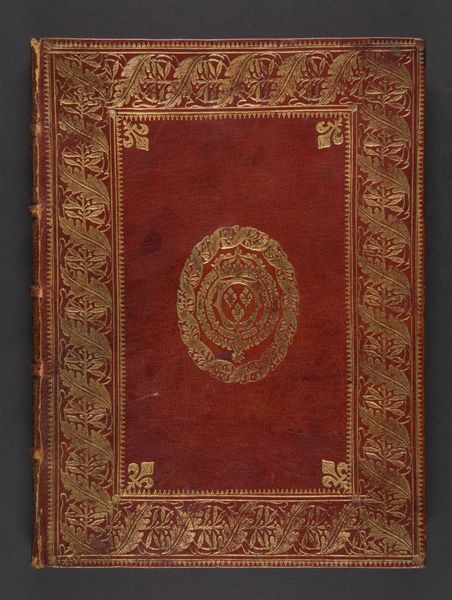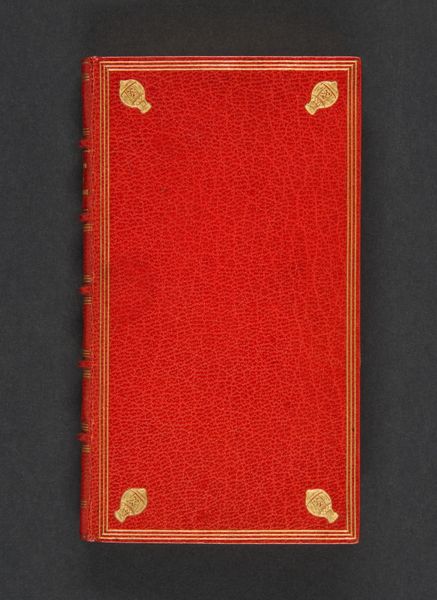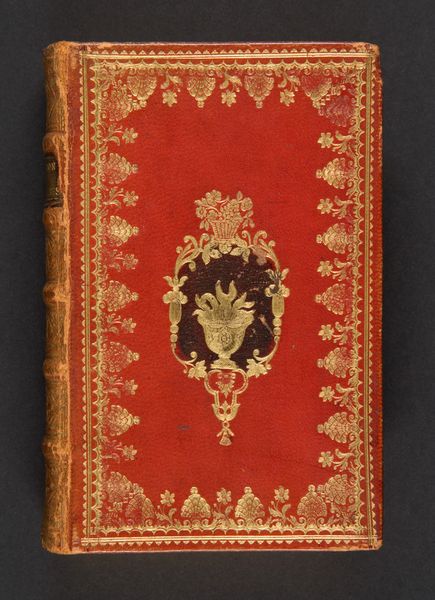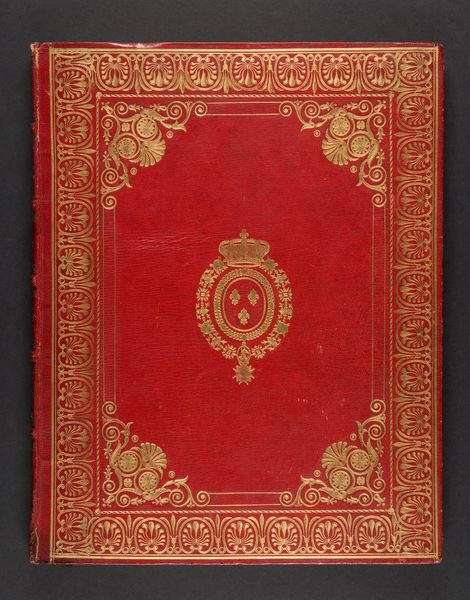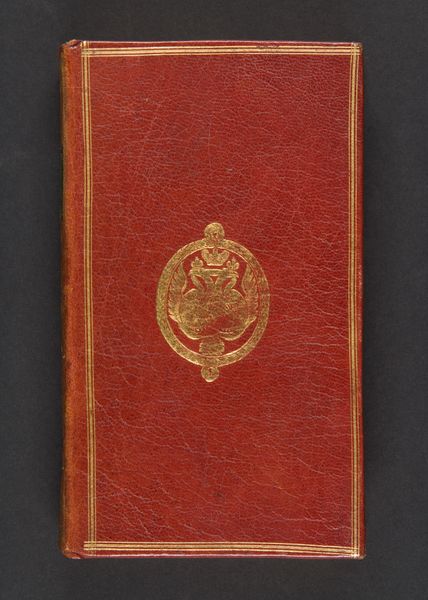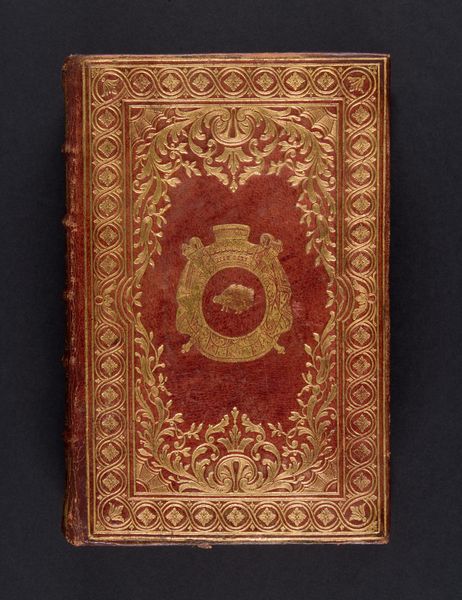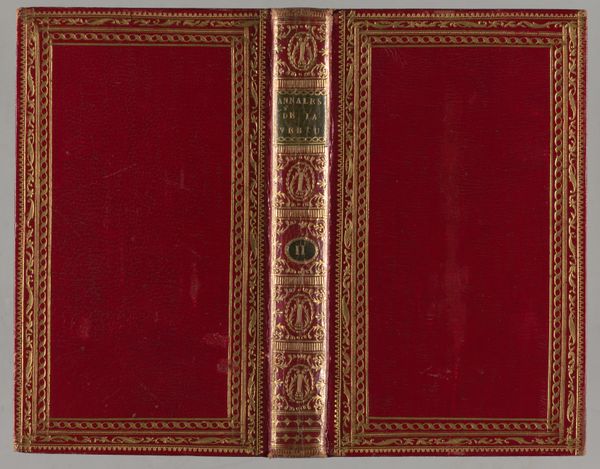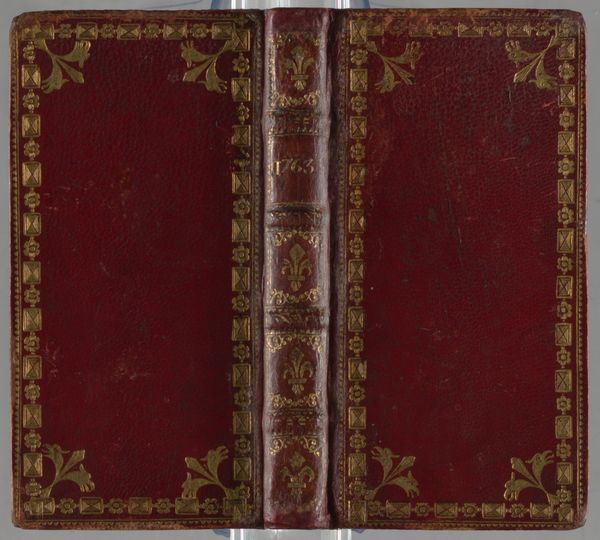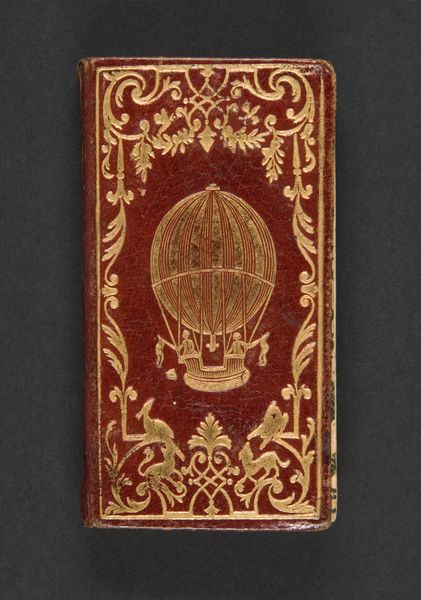
Almanach royal, année bissextile M.DCC.LXCII : présenté a sa Majeste pour la premiere fois en 1699 par Laurent d'Houry 1791
0:00
0:00
Dimensions: 679 pages, 1 folded map, Height: 7 7/8 in. (20 cm)
Copyright: Public Domain
Curator: Let's take a look at this beautiful "Almanach royal," printed in 1791 by the Imprimerie de Testu. What are your first impressions? Editor: Opulence. That red leather, with the gold tooling, feels so incredibly decadent and refined, almost aggressively so. Curator: Right? Consider the almanac's function—to provide calendrical and astronomical information to the elite. It wasn't just about the words inside; the exterior broadcasts status through its material and craftsmanship. Look closely at the patterns; you’ll notice the meticulous, repetitive detail of the embossed gold. Editor: Precisely. Those floral motifs at the corners, the geometric designs framing the entire cover… the floral design has traditional ties to fertility, celebration, power… But all those are set against repetitive linear work. What cultural messages might these have held for the book’s original aristocratic audience? Curator: Absolutely, the production values alone indicate luxury, access, and control of resources and craft. The bookbinding trade in the 18th century relied on highly skilled artisans, a well-organized system of workshops, trade networks to supply high-quality leather and gold leaf. Editor: The binding definitely elevates the whole almanac to something more than just an object of utility; it's a status symbol, almost a talisman for those aligned with the Crown. Curator: Very much a presentation piece meant to impress the king, which speaks volumes about the value placed on craft and material presentation during that time. Think about all those hands, all that human effort and time reflected in these intricate layers. Editor: Looking at this, one has a greater understanding of that moment in history – as we grasp the role the symbol played, a quiet and lasting means of communication in a world steeped in meaning and, for some, privilege. Curator: A powerful reminder to delve into the complex production of this “everyday” item that once spoke volumes beyond its calendrical purpose.
Comments
No comments
Be the first to comment and join the conversation on the ultimate creative platform.
